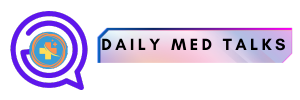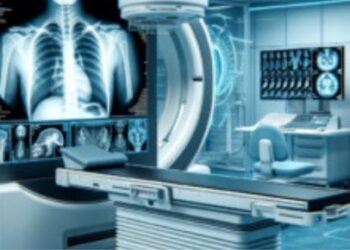Hypertension, also known as high blood pressure, is a common condition that affects roughly one in three veterans. This condition, if left unchecked, can lead to severe health complications such as heart disease, stroke, and kidney failure. Addressing hypertension effectively is thus a critical priority for the Veterans Affairs (VA) healthcare system. One innovative solution that has emerged in recent years is remote patient monitoring (RPM). This approach allows healthcare providers to track veterans’ health data using advanced telecommunication and electronic tools, thereby revolutionizing the way healthcare is delivered for emergency vet singapore struggling with hypertension.
Understanding Hypertension in Veterans
Veterans are a unique population with specific healthcare needs. The stressors related to military service, such as physical and psychological challenges, often contribute to the development of hypertension. Besides, lifestyle factors like diet, exercise, and alcohol consumption also play crucial roles. The VA has recognized these factors and set out to create specialized programs to tackle the hypertension issue head-on.
The Role of Remote Patient Monitoring
VA Remote patient monitoring (RPM) involves using electronic devices and technologies to gather health data from individuals in one location and securely transmit this information to healthcare providers in a different location. For veterans with hypertension, RPM can include using home-based blood pressure monitors, mobile applications, and other digital tools to track blood pressure readings over time.
One key benefit of RPM is the ability to provide continuous oversight without the need for frequent in-person visits to a healthcare facility. This is particularly advantageous for veterans who may face mobility issues or live in remote areas with limited access to VA medical services. By using RPM, healthcare providers can receive real-time data, which allows for more timely interventions and personalized care strategies.
Benefits of RPM for Veterans with Hypertension
Personalized Care
Remote monitoring enables healthcare providers to tailor treatment plans based on the continuous stream of data received from the veteran’s home. This personalized approach can lead to more effective hypertension management, as changes in blood pressure are detected early, and medications can be adjusted accordingly.
Improved Patient Engagement
RPM technologies encourage veterans to become more active participants in their healthcare. Having easy access to their health data empowers them to understand how lifestyle choices affect their hypertension, promoting better adherence to treatment plans and healthier lifestyle adjustments.
Enhanced Access to Healthcare
RPM removes traditional barriers to accessing healthcare. Veterans in rural or underserved areas can receive consistent monitoring without traveling long distances. This improves compliance and reduces the chances of hypertension-related complications arising from delayed treatment.
Cost-Effectiveness
Implementing RPM can result in cost savings for both the VA and veterans. Reducing the need for frequent clinic visits, hospital admissions, and emergency room visits due to unmanaged hypertension decreases the overall cost burden on the healthcare system. These savings can then be redirected to enhance healthcare services for veterans further.
Implementation and Challenges
While the advantages of RPM are clear, its implementation within the VA system does present some challenges. First, there is the issue of technology adoption and literacy. Not all veterans may be comfortable using the needed technology, necessitating comprehensive training and support programs.
Additionally, data security and patient privacy are paramount. The use of electronic health data mandates stringent data protection protocols to ensure veterans’ information is safe and secure. The VA must continue developing robust cybersecurity measures to mitigate potential risks.
Furthermore, integrating RPM into existing healthcare frameworks requires careful coordination and collaboration among healthcare providers, administrators, technology developers, and veterans. The success of RPM depends on the seamless integration of these components to ensure that health data is accurate, timely, and used effectively for clinical decision-making.
Future Prospects
As technology continues to evolve, so will remote patient monitoring capabilities. Future advancements may include developing more sophisticated devices to analyze a broader range of health metrics. With ongoing research and development, RPM is poised to become a cornerstone of hypertension management within the veteran population.
Additionally, expanding the scope of RPM to integrate with other chronic conditions will provide a more holistic approach to veterans’ health. By addressing hypertension within the broader context of overall health, the VA can optimize veterans’ treatment outcomes and quality of life.
Recommendations for Expanding RPM in VA Healthcare
Several strategic recommendations should be considered for implementation across the VA healthcare system to maximize the potential benefits of remote patient monitoring.
Enhance Education and Training
Investing in comprehensive education and training programs for both veterans and healthcare providers is crucial. Veterans should be equipped with the necessary skills to use RPM technologies confidently, while providers need training to interpret data effectively and make informed clinical decisions. Tailored educational resources and support services will foster greater engagement and utilization of RPM tools.
Strengthen Data Security Protocols
Given the sensitive nature of health data, strengthening data security protocols must remain a top priority. The VA should continue to employ cutting-edge cybersecurity technologies and conduct regular audits to ensure robust and up-to-date data protection measures. Safeguarding veterans’ personal and health information is essential to maintaining trust and ensuring adherence to RPM programs.
Foster Interdisciplinary Collaboration
Fostering interdisciplinary collaboration among various stakeholders—including healthcare providers, technologists, administrators, and policymakers—is imperative to successfully integrating RPM into the broader healthcare infrastructure. Creating a cohesive ecosystem that supports seamless communication and coordination will enhance the efficacy of RPM initiatives.
Pilot and Evaluate New Technologies
Continual pilot testing and evaluating emerging RPM technologies can help identify the most effective tools and devices for managing hypertension in veterans. By embracing innovation and adaptability, the VA can keep pace with technological advancements and ensure veterans have access to state-of-the-art monitoring solutions.
Expand Research and Development
Investing in ongoing research and development will drive the future of RPM, not only in hypertension management but also in broader health contexts. Exploring new horizons for RPM applications will help create more comprehensive healthcare solutions, benefiting veterans’ well-being.
By implementing these recommendations, the VA healthcare system can enhance its RPM initiatives, offering tailored, efficient, and secure healthcare solutions that address the unique needs of veterans with hypertension, paving the way for improved outcomes and quality of life.
Conclusion
Remote Patient Monitoring (RPM) has emerged as a transformative tool in managing hypertension among veterans, offering numerous advantages that align with the unique needs of this population. By facilitating personalized care, enhancing patient engagement, improving access to healthcare, and proving cost-effective, RPM represents a forward-thinking approach to veteran healthcare. Platforms like DocVA play a crucial role in this transformation, enabling seamless communication between healthcare providers and veterans.
However, the challenges of technology adoption, data security, and integration into existing systems must continuously be addressed to maximize its potential. As the VA continues to embrace RPM and leverage tools such as DocVA, it can create a more efficient and effective healthcare experience for veterans dealing with hypertension.











